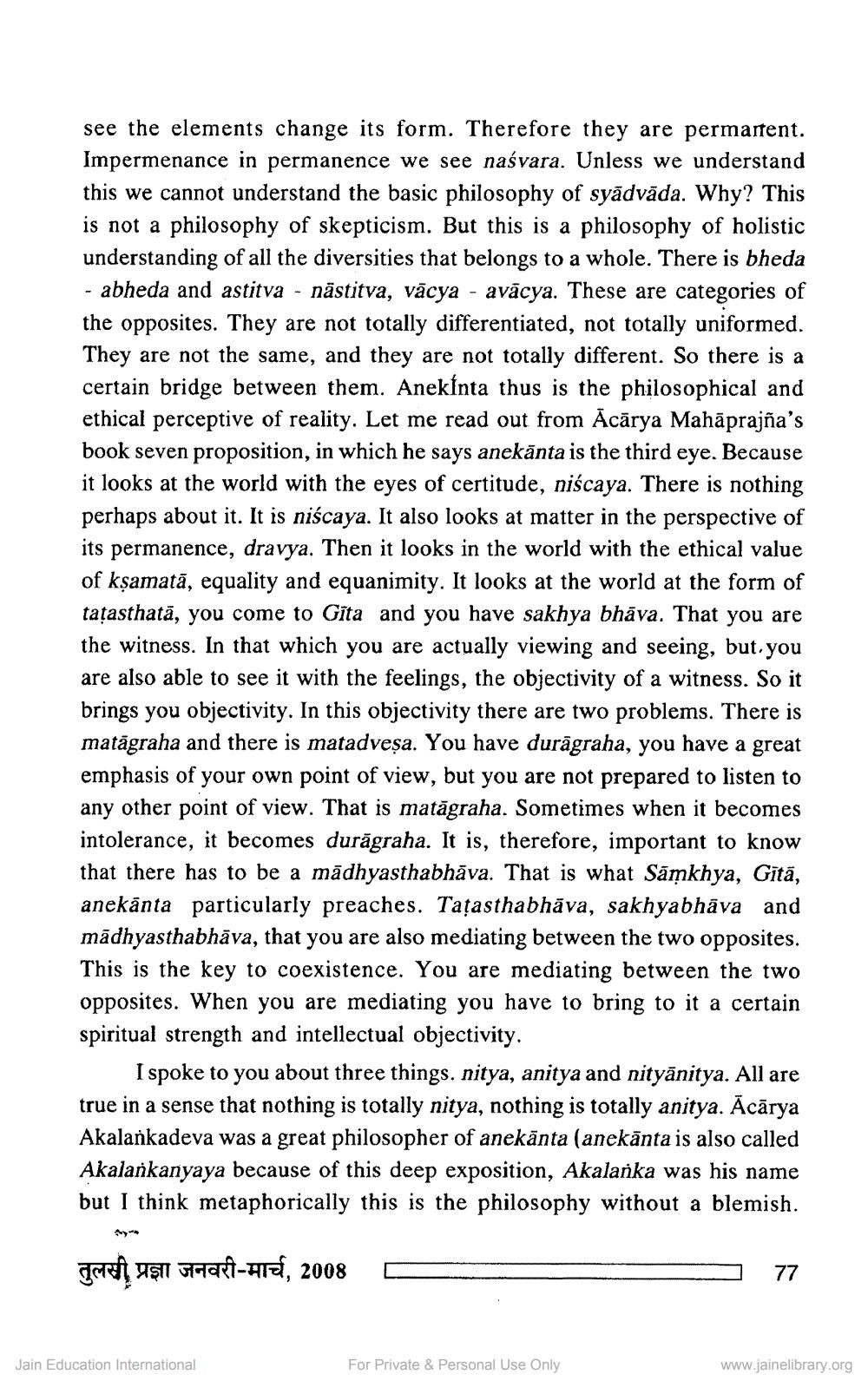________________
see the elements change its form. Therefore they are permanent. Impermenance in permanence we see naśvara. Unless we understand this we cannot understand the basic philosophy of syādvāda. Why? This is not a philosophy of skepticism. But this is a philosophy of holistic understanding of all the diversities that belongs to a whole. There is bheda abheda and astitva - nästitva, vācya avācya. These are categories of the opposites. They are not totally differentiated, not totally uniformed. They are not the same, and they are not totally different. So there is a certain bridge between them. Anekĺnta thus is the philosophical and ethical perceptive of reality. Let me read out from Acārya Mahāprajña's book seven proposition, in which he says anekanta is the third eye. Because it looks at the world with the eyes of certitude, niscaya. There is nothing perhaps about it. It is niścaya. It also looks at matter in the perspective of its permanence, dravya. Then it looks in the world with the ethical value of kṣamatā, equality and equanimity. It looks at the world at the form of taṭasthată, you come to Gita and you have sakhya bhāva. That you are the witness. In that which you are actually viewing and seeing, but you are also able to see it with the feelings, the objectivity of a witness. So it brings you objectivity. In this objectivity there are two problems. There is matagraha and there is matadveṣa. You have duragraha, you have a great emphasis of your own point of view, but you are not prepared to listen to any other point of view. That is matagraha. Sometimes when it becomes intolerance, it becomes durāgraha. It is, therefore, important to know that there has to be a madhyasthabhava. That is what Samkhya, Gītā, anekānta particularly preaches. Taṭasthabhāva, sakhyabhāva and mādhyasthabhāva, that you are also mediating between the two opposites. This is the key to coexistence. You are mediating between the two opposites. When you are mediating you have to bring to it a certain spiritual strength and intellectual objectivity.
-
I spoke to you about three things. nitya, anitya and nityānitya. All are true in a sense that nothing is totally nitya, nothing is totally anitya. Acārya Akalankadeva was a great philosopher of anekanta (anekānta is also called Akalankanyaya because of this deep exposition, Akalanka was his name but I think metaphorically this is the philosophy without a blemish.
Ay
तुलसी, प्रज्ञा जनवरी-मार्च, 2008
Jain Education International
For Private & Personal Use Only
77
www.jainelibrary.org




